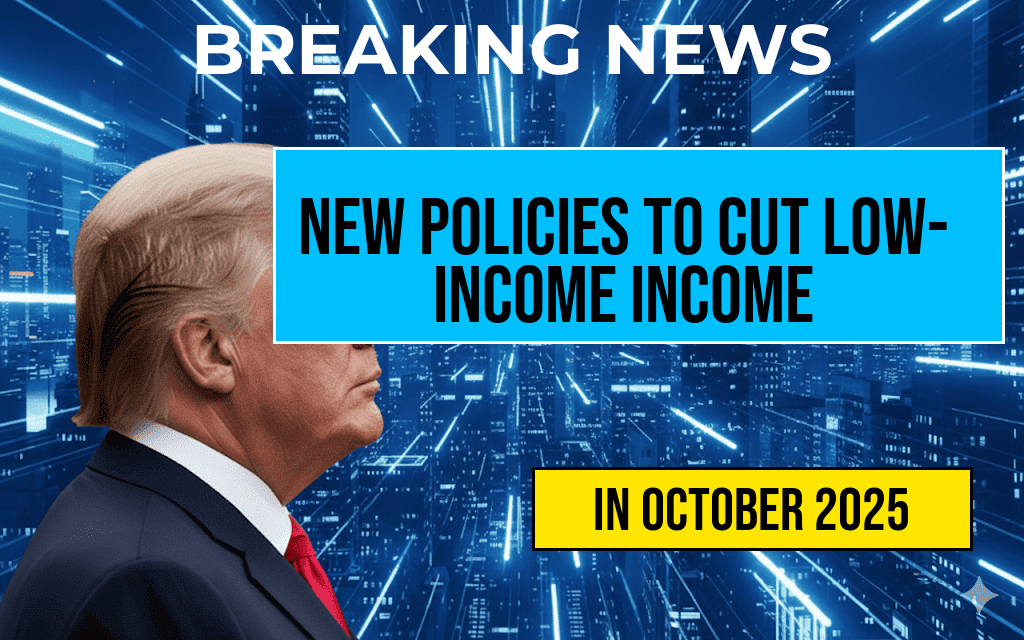In a move expected to significantly impact low-income households, new policies set to be implemented in early 2024 could reduce the annual income of these families by an estimated $1,650. The changes, driven by adjustments in social welfare programs and tax credits, have sparked considerable debate among policymakers, economists, and advocacy groups. Proponents argue that these reforms are necessary to streamline government spending and promote self-sufficiency. However, critics warn that the financial strain on vulnerable families could exacerbate poverty levels and hinder economic mobility. As low-income families brace for the upcoming changes, many are left wondering how they will make ends meet in an increasingly challenging economic landscape.
Details of the Policy Changes
The forthcoming policies are primarily centered around modifications to the Earned Income Tax Credit (EITC), along with adjustments to state-level welfare programs. The EITC has historically provided essential financial support to working families, incentivizing employment while reducing poverty. However, the latest reforms aim to tighten eligibility requirements and decrease the benefit amount for certain income brackets.
Impact on Households
According to a recent analysis by the Center on Budget and Policy Priorities, the average low-income household will see a reduction of approximately $1,650 in available income due to these changes. For many families, this cut could mean the difference between affording basic necessities and facing financial hardship.
Response from Advocacy Groups
- The National Low Income Housing Coalition has expressed strong opposition to the policy adjustments, arguing that they disproportionately affect the most vulnerable populations.
- Organizations such as Feeding America have raised concerns about the potential increase in food insecurity among low-income families.
- Many advocates are mobilizing to call for a reevaluation of the proposed policies, emphasizing the potential long-term consequences of reduced financial support.
Economic Context
The backdrop of these changes is a complex economic landscape marked by rising inflation and a fluctuating job market. As the cost of living continues to climb, many low-income families are already stretched thin. According to the latest data from the Bureau of Labor Statistics, inflation rates have surged, particularly in housing, food, and transportation sectors, further straining household budgets.
Potential Consequences
Experts predict that the reduction in income could lead to a cascade of negative effects for low-income households, including:
- Increased Debt Levels: Families may resort to borrowing or using credit cards to cover essential expenses.
- Higher Rates of Food Insecurity: With less disposable income, families might struggle to afford nutritious food.
- Reduced Economic Mobility: The inability to invest in education or job training could hinder long-term opportunities for advancement.
Political Landscape
The new policies have ignited a contentious debate in Congress, with some lawmakers arguing that fiscal responsibility must take precedence over social welfare spending. Conversely, others advocate for the protection of vulnerable populations, highlighting the need for a safety net in times of economic uncertainty.
Looking Ahead
As the implementation date approaches, discussions surrounding these changes are expected to intensify. Lawmakers are under pressure to find a balance between budgetary constraints and the welfare of their constituents. Public opinion will likely play a crucial role in shaping the final outcomes of these policies.
Conclusion
The anticipated reduction of $1,650 in income for low-income households represents a significant shift in how social welfare is approached in the United States. As families prepare for the financial implications of these changes, the conversation around economic equity and support for the most vulnerable members of society remains more critical than ever.
Frequently Asked Questions
What are the new policies that are expected to impact low-income households?
The new policies include changes to welfare, tax credits, and subsidies aimed at adjusting financial support for low-income families, which could lead to an overall reduction in their income.
How much is the expected reduction in income for low-income households?
It is anticipated that the new policies will result in a decrease of approximately $1,650 in annual income for affected low-income households.
Who will be affected by these policy changes?
The policy changes will primarily affect low-income households, particularly those relying on government assistance programs, including single-parent families and individuals with limited income sources.
What are the potential consequences of these income reductions?
The reduction in income could lead to increased financial strain on low-income families, making it more difficult for them to cover basic necessities such as housing, food, and healthcare.
Are there any measures being proposed to mitigate the impact of these policies?
Some advocates are calling for alternative measures such as increased minimum wage, expanded social safety nets, and enhanced job training programs to help offset the financial impact on low-income households.













